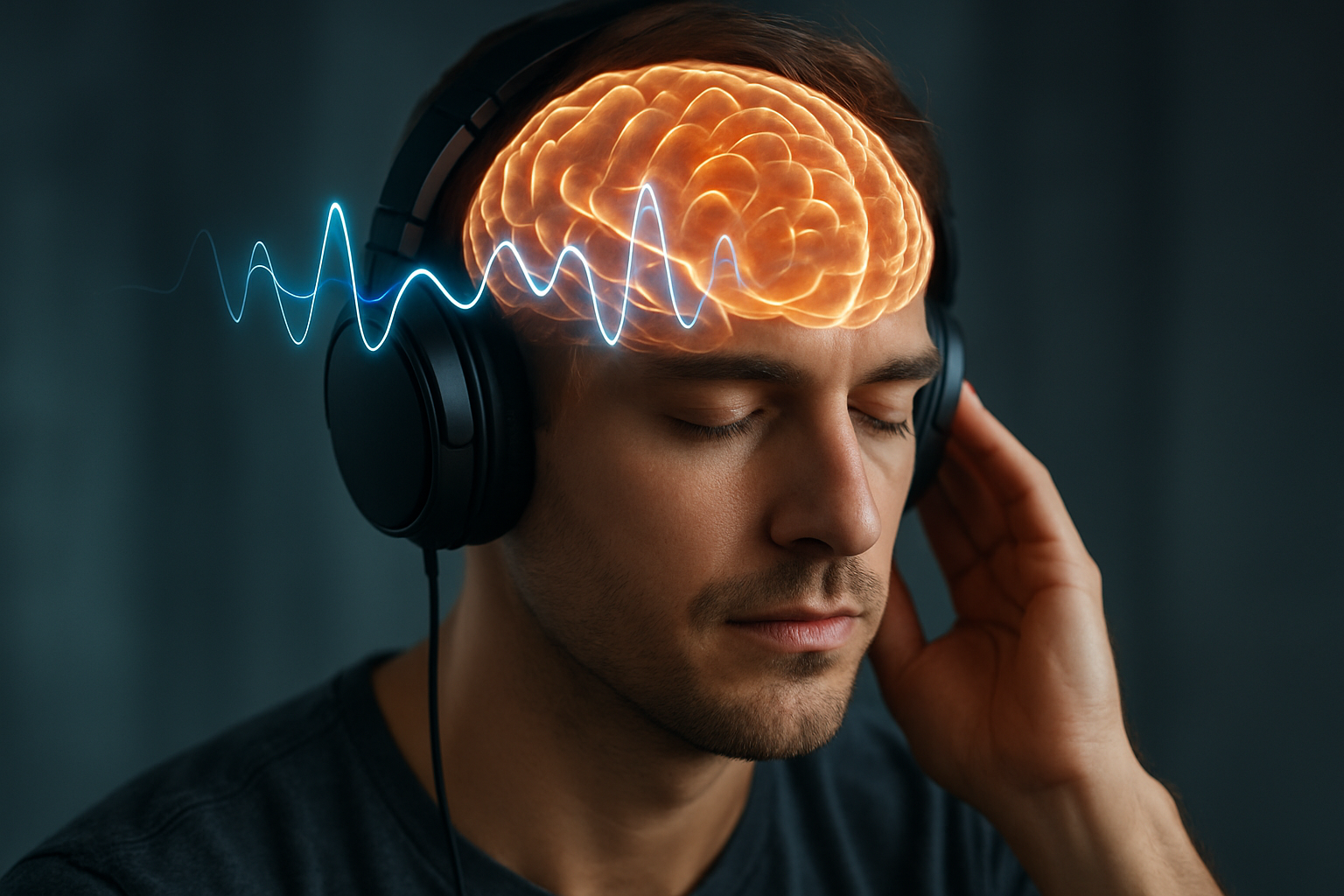Binaural Beats: Tuning Your Brain for Peak Performance
Can sound waves really enhance your cognitive abilities and emotional well-being? Imagine a world where you could boost your focus, reduce anxiety, and improve sleep quality simply by listening to specially designed audio tracks. Welcome to the fascinating realm of binaural beats, a cutting-edge approach to brain entrainment that's revolutionizing the way we think about mental performance and relaxation.

For example, if a 440 Hz tone is played in one ear and a 444 Hz tone in the other, the brain will perceive a 4 Hz beat. This perceived frequency corresponds to certain brainwave states associated with different cognitive and emotional states.
Brainwave States and Their Effects
Different brainwave frequencies are associated with various mental states:
-
Delta waves (0.5-4 Hz): Deep sleep and restorative healing
-
Theta waves (4-8 Hz): Meditation, creativity, and memory formation
-
Alpha waves (8-13 Hz): Relaxation and light meditation
-
Beta waves (13-30 Hz): Active thinking and problem-solving
-
Gamma waves (30-100 Hz): Peak concentration and cognitive performance
Binaural beats aim to induce these specific brainwave states, potentially enhancing cognitive function, emotional regulation, and overall well-being.
Research and Potential Benefits
While research on binaural beats is still in its early stages, several studies have shown promising results:
-
Improved Focus and Attention: A 2017 study published in the journal Psychological Research found that exposure to beta-frequency binaural beats was associated with enhanced attention and task performance.
-
Reduced Anxiety: Research in the International Journal of Psychophysiology suggested that listening to theta-frequency binaural beats may help reduce pre-operative anxiety in patients.
-
Better Sleep Quality: A study in Frontiers in Human Neuroscience indicated that delta-frequency binaural beats could potentially improve sleep quality and increase deep sleep duration.
-
Enhanced Creativity: Some research suggests that alpha-frequency binaural beats may boost creative thinking and problem-solving abilities.
-
Pain Management: Preliminary studies have explored the potential of binaural beats in reducing perceived pain intensity in chronic pain patients.
How to Use Binaural Beats Effectively
To experience the potential benefits of binaural beats:
-
Choose high-quality headphones for optimal stereo separation.
-
Find a quiet, comfortable space where you won’t be disturbed.
-
Start with shorter sessions (15-30 minutes) and gradually increase duration.
-
Experiment with different frequencies to find what works best for you.
-
Combine binaural beats with meditation or relaxation techniques for enhanced effects.
-
Be consistent in your practice to maximize potential benefits.
Precautions and Considerations
While generally considered safe, there are some important considerations when using binaural beats:
-
Avoid using while driving or operating machinery, as they may induce altered states of consciousness.
-
People with epilepsy or seizure disorders should consult a healthcare professional before use.
-
Be cautious if you have a history of auditory sensitivity or tinnitus.
-
Remember that binaural beats are not a substitute for medical treatment or therapy.
-
Quality matters – use reputable sources for binaural beat tracks to ensure proper frequency calibration.
Tuning In: Quick Facts About Binaural Beats
-
Binaural beats were discovered in 1839 by Prussian physicist Heinrich Wilhelm Dove.
-
The effectiveness of binaural beats may vary from person to person.
-
Some people report vivid imagery or enhanced dream recall when using theta-frequency beats before sleep.
-
Binaural beats are being explored in fields like PTSD treatment and addiction recovery.
-
The U.S. Army has researched binaural beats for potential use in military training and performance enhancement.
A New Frontier in Cognitive Enhancement
As we continue to unravel the mysteries of the human brain, binaural beats offer an intriguing avenue for non-invasive cognitive enhancement and emotional regulation. While more research is needed to fully understand their potential, the growing body of evidence suggests that this auditory technology could play a significant role in future wellness practices. By harnessing the power of sound to influence brainwave patterns, we may be on the cusp of unlocking new dimensions of mental performance and emotional well-being.





